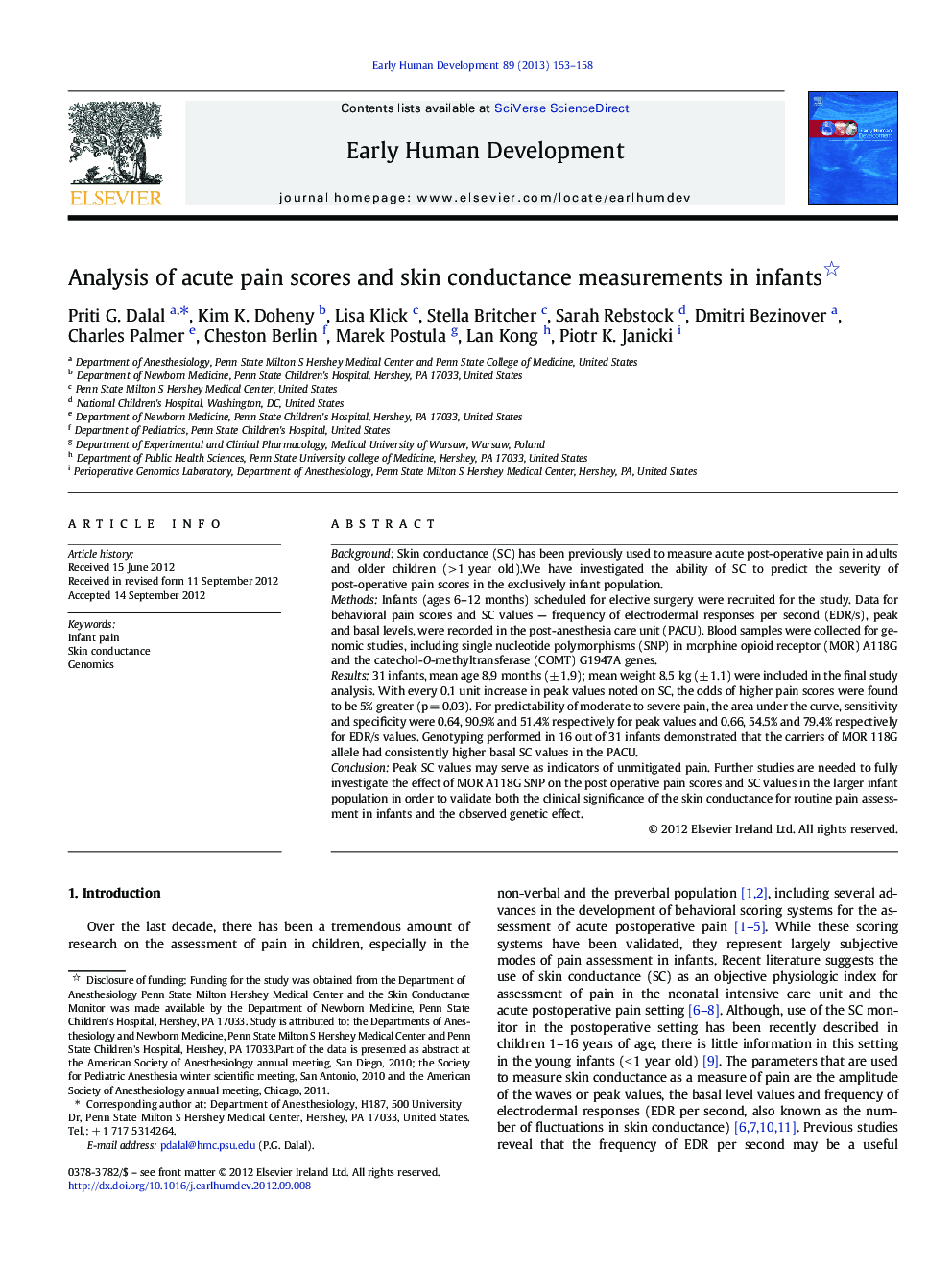| Article ID | Journal | Published Year | Pages | File Type |
|---|---|---|---|---|
| 3918248 | Early Human Development | 2013 | 6 Pages |
BackgroundSkin conductance (SC) has been previously used to measure acute post-operative pain in adults and older children (> 1 year old).We have investigated the ability of SC to predict the severity of post-operative pain scores in the exclusively infant population.MethodsInfants (ages 6–12 months) scheduled for elective surgery were recruited for the study. Data for behavioral pain scores and SC values — frequency of electrodermal responses per second (EDR/s), peak and basal levels, were recorded in the post-anesthesia care unit (PACU). Blood samples were collected for genomic studies, including single nucleotide polymorphisms (SNP) in morphine opioid receptor (MOR) A118G and the catechol-O-methyltransferase (COMT) G1947A genes.Results31 infants, mean age 8.9 months (± 1.9); mean weight 8.5 kg (± 1.1) were included in the final study analysis. With every 0.1 unit increase in peak values noted on SC, the odds of higher pain scores were found to be 5% greater (p = 0.03). For predictability of moderate to severe pain, the area under the curve, sensitivity and specificity were 0.64, 90.9% and 51.4% respectively for peak values and 0.66, 54.5% and 79.4% respectively for EDR/s values. Genotyping performed in 16 out of 31 infants demonstrated that the carriers of MOR 118G allele had consistently higher basal SC values in the PACU.ConclusionPeak SC values may serve as indicators of unmitigated pain. Further studies are needed to fully investigate the effect of MOR A118G SNP on the post operative pain scores and SC values in the larger infant population in order to validate both the clinical significance of the skin conductance for routine pain assessment in infants and the observed genetic effect.
